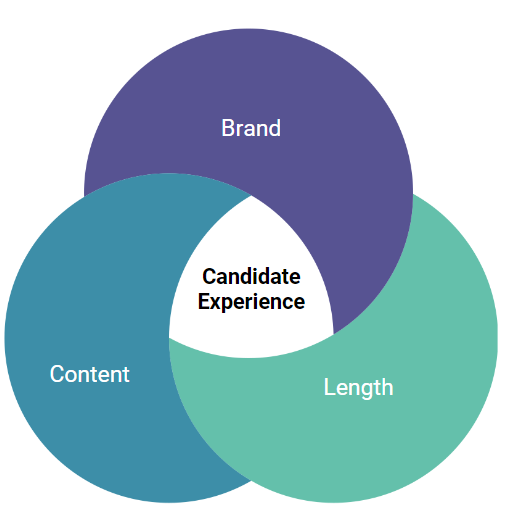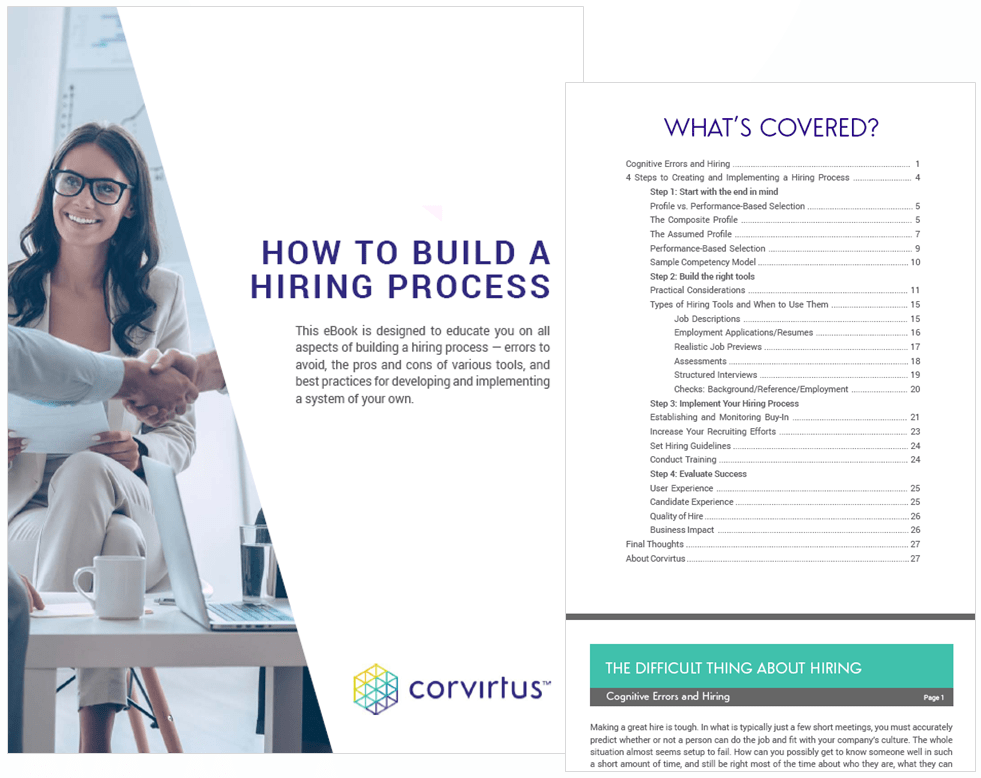Everyone from The Wall Street Journal, to talent management publications, to Forbes has an opinion on what you should be doing with your hiring process and what exactly defines a positive candidate experience. With a constantly advancing stream of technology, how do we balance artificial intelligence and algorithm-based solutions, like validated pre-employment assessments, while reducing time time-to-hire while creating a positive and trust-building candidate experience?
Your candidate experience is your future employee's initial immersion into your brand: your values, promises, and vision. Candidates cope with uncertainty throughout their search and your candidate experience can elevate your status as a possible employer by communicating your culture, expectations and goals. Touchpoints like the application, interviews, and any screens like assessments are opportunities to share how these support your culture and the care you put into ensuring new hires have the potential to thrive.
How do we begin in evaluating the candidate experience?
If you look at each step of your candidate's journey and experience, consider three things:
1. Length: How long does the step take to complete? The process as a whole? How is this communicated?
2. Content: How does the content resonate with the role, your expectations, and your ideal candidate's values and goals?
3. Brand: What does it communicate about your culture, values, and vision? Does it have the potential to communicate anything that's not consistent with your brand?

Time and Candidate Expectations
As many as 90 percent of candidates fail to complete the job applications they start. Job openings with higher levels of responsibility can take more time and investment from candidates, but only if those hurdles viewed as job relevant.
By mapping each step of the process and tracking time to complete, you can begin to think intentionally about your candidate experience and what you want candidates to think, feel, say, and do from each step. In addition to tracking candidate flow, this is also an opportunity to monitor changes in the diversity of your applicant pool at each step.
Let's take hiring assessments for a moment. Our research replicates that by academics and across the field in finding that a time to complete between 15 and 45 minutes can yield high completion rates and candidate engagement. How long your assessment should take depends on the level of complexity, competitiveness of the market, and quality of the assessment.
Further, by using assessments focused precisely performance factors that exclude irrelevant information, you can have a shorter assessment that engages candidates without compromising important information. You can also have two shorter hiring assessments to maximize the amount of information you receive from candidates.
While it’s easy to fall into the shorter is better mindset for assessments, a hiring assessment can be too short. Imagine you’ve found a job opening you love, but when you get to the assessment there are only six questions and it takes less than ten minutes to complete. In this situation, the data shows that candidates feel frustrated that they didn’t have the opportunity to fully show their strengths.

Photo by Christina @ wocintechchat.com on Unsplash
Engaging Content
Let's start with the candidate's first moments applying: your job ads, description, and careers page. How are these tools sparking enthusiasm and commitment within candidates so they're ready to invest their time and energy in applying? Some actions our clients have taken, across industries, to make these steps more compelling include:
- Including videos illustrating your culture, the role, or even the work environment. These could be included on your careers page and linked in job ads. Some of the recruiting leaders we've partnered with use these videos to communicate their culture or show an accurate depiction of the work environment (like a busy manufacturing environment or an open kitchen in a restaurant).
- In the application, what questions will excite candidates and leave them feeling empowered? In other words, consider what short and easy to answer questions might allow candidates to demonstrate their unique strengths. The benefits could be two-fold as you these questions can relate to evaluating core skills, experience, and mindsets required for the position.
- Consider including an unscored self-assessment that educates and allows candidates to evaluate how they connect with job demands and your culture. We create realistic job previews which are short engaging assessments that are unscored but provide candidates with a report on how their expectations, preferences, and capabilities meet the demands of the role and where they may feel challenged.
Next, let's circle back to hiring assessments for a moment. When people think about employment assessments they often remember general first-person statements they were asked to endorse on a “Strongly Agree” to “Strongly Disagree” scale. These items could include, “I enjoy being around others,” or “I use a schedule to plan my day.” It’s important to note that no one item on its own is a decision-maker. Instead, several items relating to factors such as extraversion or detail-orientation are combined to look for trends across items. To improve the candidate experience even further, you can measure performance drivers in different ways. For example, Corvirtus offers several situational assessments that engage candidates in customer service, conflict, or management scenarios. We also have assessments that ask candidates to select from a list which tasks they are most likely to complete, or which tasks they are least likely to complete in a day. Incorporating several means of assessing behavior gives the candidate variety and strengthens their belief that the assessment is related to job performance.
Employment Brand
Job candidates must manage a lot of uncertainty. Even with all the media channels and information about employers online, it’s impossible to fully understand what the job will be like. In the absence of a complete picture, candidates develop beliefs about your employment brand (e.g., you are professional, selective), or what you are like as a place to work, based on the assessment experience. By using assessments and screening tools that clearly convey what you expect from new hires you can build a stronger employment brand. This is one way a realistic job preview (RJP) adds to the process by giving candidates the opportunity to directly compare their preferences and personality to your culture and values.
Building a hiring process that attracts candidates that will perform, live your culture, and stay for the right amount of time is challenging. You need a hiring process that gets you the information you need to make the right decisions, while also engaging candidates. By considering the three cornerstones of length, content, and brand, you can engineer a system that drives performance.





